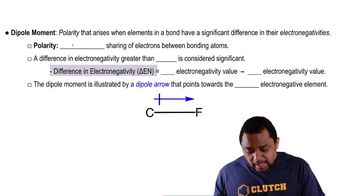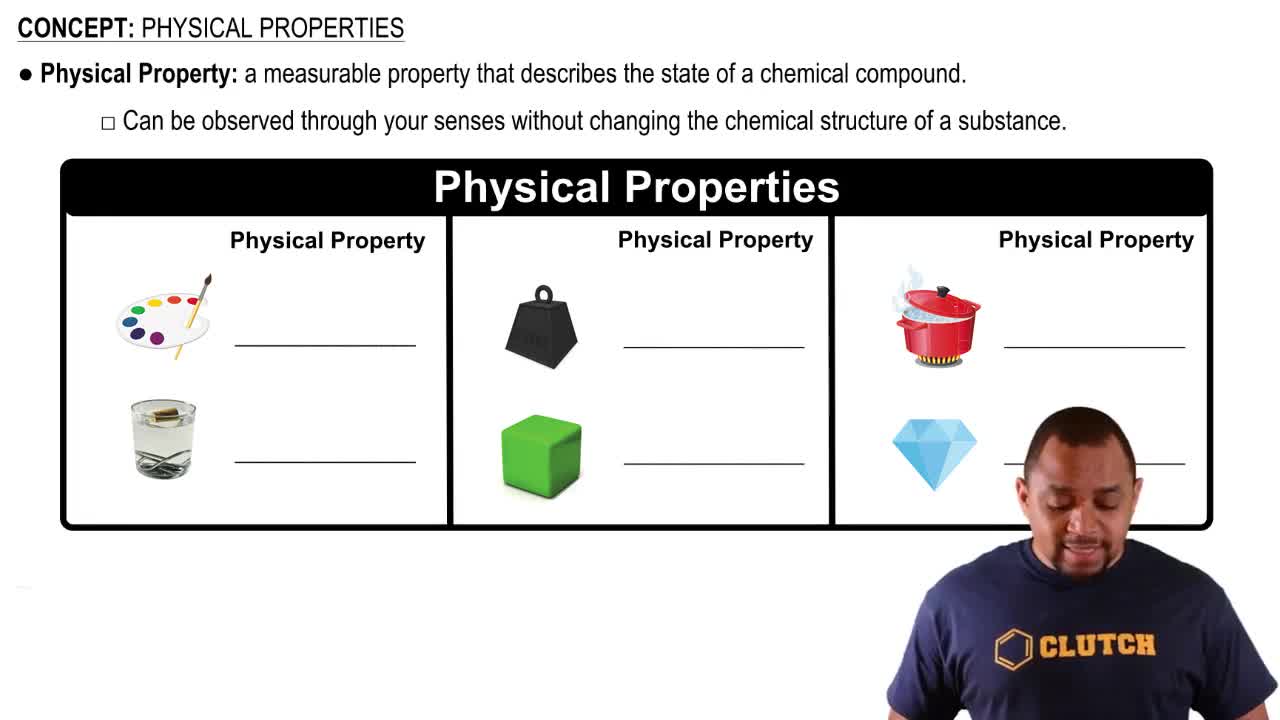When lithium iodide (LiI) is dissolved in water, the solution becomes hotter. c. Sketch a qualitative energy diagram similar to Figure 13.7 for the dissolution of LiI.
Ch.14 - Solutions
Chapter 14, Problem 42
Use the data to calculate the heats of hydration of lithium chloride and sodium chloride. Which of the two cations, lithium or sodium, has stronger ion–dipole interactions with water? Why?
 Verified step by step guidance
Verified step by step guidance1
Identify the relevant data needed for the calculation, such as lattice energy and enthalpy of solution for both lithium chloride (LiCl) and sodium chloride (NaCl).
Use the formula for the enthalpy of hydration: \( \Delta H_{hydration} = \Delta H_{solution} - \Delta H_{lattice} \) to calculate the heats of hydration for both LiCl and NaCl.
Substitute the known values for \( \Delta H_{solution} \) and \( \Delta H_{lattice} \) into the formula for each compound to find \( \Delta H_{hydration} \).
Compare the calculated heats of hydration for LiCl and NaCl to determine which cation has stronger ion–dipole interactions with water.
Discuss the results: The cation with the more negative heat of hydration has stronger ion–dipole interactions with water, due to its smaller size and higher charge density, which enhances its ability to attract water molecules.

Verified video answer for a similar problem:
This video solution was recommended by our tutors as helpful for the problem above.
Video duration:
6mWas this helpful?
Key Concepts
Here are the essential concepts you must grasp in order to answer the question correctly.
Heats of Hydration
The heat of hydration refers to the energy change that occurs when ions are surrounded by water molecules. It is an exothermic process for most ions, as energy is released when ion-dipole interactions form between the ions and water. The magnitude of the heat of hydration is influenced by the charge and size of the ion, with smaller, highly charged ions typically having larger heats of hydration.
Recommended video:
Guided course

Ionic Hydrates Naming
Ion-Dipole Interactions
Ion-dipole interactions are attractive forces between an ion and the polar molecules of a solvent, such as water. These interactions are crucial for the solvation process, where ions become surrounded by solvent molecules. The strength of these interactions depends on the charge of the ion and the dipole moment of the solvent, with smaller cations like lithium typically forming stronger interactions due to their higher charge density.
Recommended video:
Guided course

Dipole Moment
Comparative Cation Properties
When comparing lithium and sodium cations, it is essential to consider their ionic radii and charge density. Lithium ions (Li+) are smaller than sodium ions (Na+), leading to a higher charge density. This results in stronger ion-dipole interactions with water for lithium, as the smaller size allows for closer proximity to the dipoles of water molecules, enhancing the overall interaction strength.
Recommended video:
Guided course

Physical Properties
Related Practice
Textbook Question
Textbook Question
When lithium iodide (LiI) is dissolved in water, the solution becomes hotter. d. Why does the solution form? What drives the process?
Textbook Question
Silver nitrate has a lattice energy of -820 kJ/mol and a heat of solution of 22.6 kJ/mol. Calculate the heat of hydration for silver nitrate.
Textbook Question
Potassium nitrate has a lattice energy of -163.8 kcal/mol and a heat of hydration of -155.5 kcal/mol. How much potassium nitrate has to dissolve in water to absorb 1.00⨉102 kJ of heat?
Textbook Question
A solution contains 35 g of NaCl per 100.0 g of water at 25°C. Is the solution unsaturated, saturated, or supersaturated? (Use Figure 14.11.)
